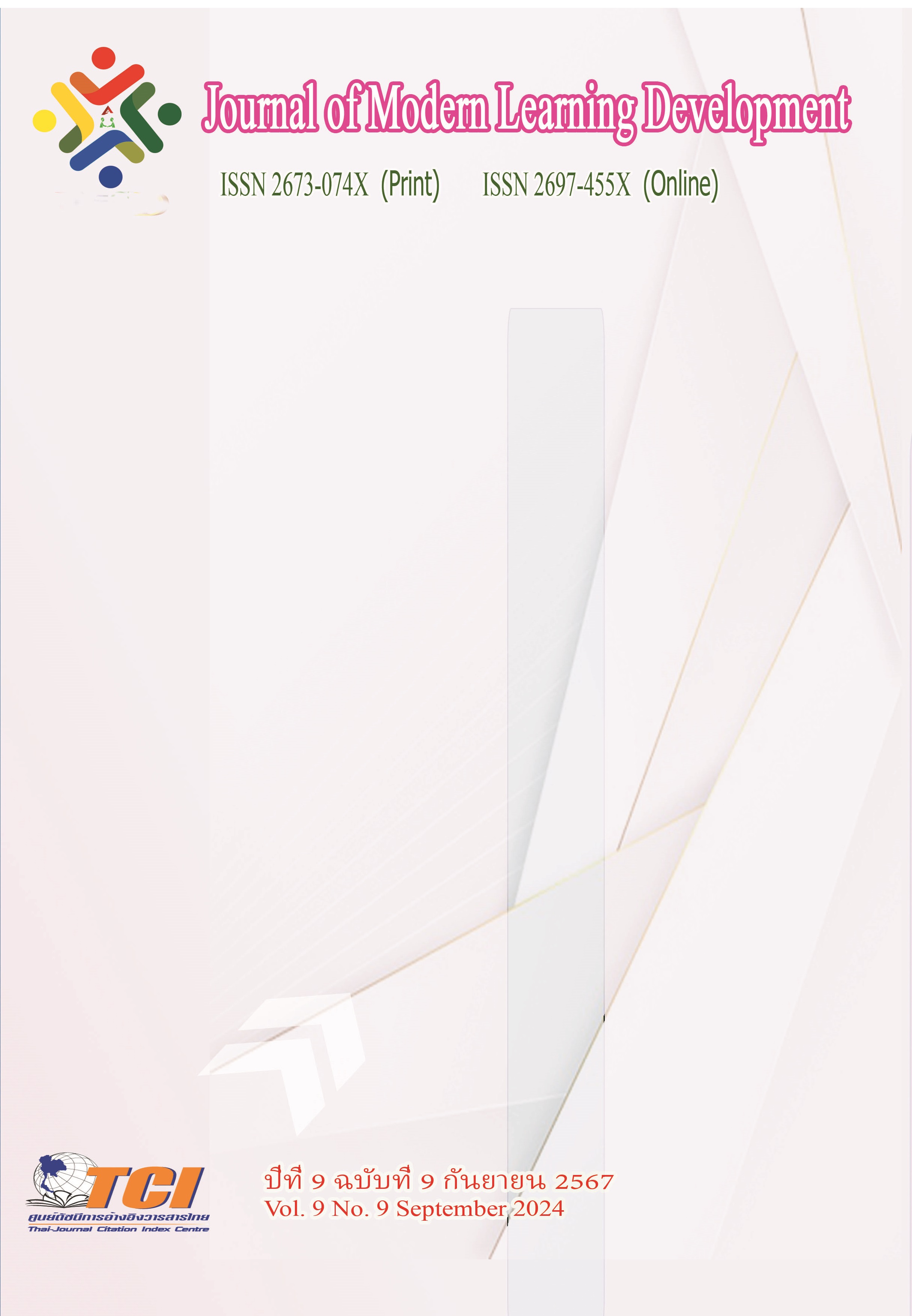Antecedents of Product Innovation and Trust Towards Purchase Decisions of CNC Cutting Metal Machines of Customers in Chonburi Areas
Main Article Content
Abstract
The objectives of this study included the causative factor affecting purchase decisions of CNC cutting machines of customers in the Chonburi areas. This is quantitative research in which samples in the study included 100 customers in the Chonburi areas who purchased CNC cutting machines. They were randomly selected by using simple random sampling. A questionnaire was implemented as a research tool and the statistics used in this study included percentage, means, standard deviation (SD), and structural equation modeling program (SEM).
The findings of the study revealed that product innovation, trust, and customer satisfaction had directly impacted purchase decisions. The path coefficient scales included 0.240, 0.353, and 0.336. Adversely, product innovation and trust had indirectly impacted product decisions. Its path coefficient scales were at 0.177 and 0.087. Furthermore, product innovation and trust had directly impacted customer satisfaction and the path coefficient scales were at 0.529 and 0.260. The findings of the study revealed that product innovation that could create a variety of products and their modern development can respond to the customer needs both in quality and costs. Furthermore, precise communication and good service could encourage customers’ trust in the products and services of the distributors who have good reputations and performance. This could show positive outcomes to contribute the customer satisfaction and help them gradually high purchase decisions.
Article Details
References
กฏษณพล เรืองไพศาล. (2562). หลักการทำงานและโครงสร้างของเครื่องซีเอ็นซี. กรุงเทพมหานคร: สำนักงานคณะกรรมการอาชีวศึกษา.
จินตนา เกษตรเสริมวิริยะ และธัญนันท์ บุญอยู่. (2564). อิทธิพลของความไว้วางใจและความพึงพอใจของผู้ใช้บริการที่อยู่ในฐานะตัวแปรคั่นกลางระหว่างการรับรู้ถึงความปลอดภัยสู่ความตั้งใจใช้บริการโรงเรียนสอนขับรถในอำเภอสามพราน จังหวัดนครปฐม. วารสารศิลปะศาสตร์และอุตสาหกรรมบริการ. 4 (2), 789-801.
มยุรา ธรรมวัฒนากุล และธัญนันท์ บุญอยู่. (2565). อิทธิพลของนวัตกรรมด้านผลิตภัณฑ์และคุณภาพของผลิตภัณฑ์ที่มีต่อการตัดสินใจซื้อของผู้บริโภคอาหารเสริมเพื่อสุขภาพในเขตกรุงเทพมหานคร โดยมีแรงจูงใจเป็นปัจจัยกำกับ. วารสารบริหารธุรกิจและสังคมศาสตร์ มหาวิทยาลัยรามคำแหง. 5 (3), 85-99.
วิจัยกรุงศรี. (2567). แนวโน้มธุรกิจและอุตสาหกรรมไทยปี 2567-2569. ออนไลน์. สืบค้นเมื่อ 10 กุมภาพันธ์ 2567. แหล่งที่มา: https://www.krungsri.com/getmedia/c220fdba-62b2-4316-af22-9646461b703f /SO _Industry_Outlook_2024_2026_240109_TH_EX.pdf.aspx.
สำนักงานพัฒนารัฐบาลดิจิทัล (องค์การมหาชน). (2562). เทคโนโลยีปัญญาประดิษฐ์สำหรับการบริหารงานและการบริการภาครัฐ. ออนไลน์. สืบค้นเมื่อ 10 กุมภาพันธ์ 2567. แหล่งที่มา: https://www. finearts.go.th/storage/contents/detail_file/3T3BbqLSIkxJNusM1rIahfEVieg9EG5sT62yyg3H.pdf.
อำพล กลิ่นบัวแย้ม. (2565). ทัศนคติและการรับรู้ถึงคุณภาพที่มีต่อพฤติกรรมการเลือกซื้อเครื่องกำเนิดไฟฟ้าของผู้ใช้งานในไทย โดยมีรูปแบบของผลิตภัณฑ์เป็นตัวแปรกำกับ. วิทยานิพนธ์บริหารธุรกิจมหาบัณฑิต. บัณฑิตวิทยาลัย: มหาวิทยาลัยเอเชียอาคเนย์.
Chukwunwem, U. G., & Ndubueze, E. J. (2021). Effect of product innovation on customer satisfaction and customers’ behavioral intentions in upscale quick service restaurants (QSRS) in Aba, Abia State, Nigeria. Novateur Publications Journal INX-A Multidisciplinary Peer Reviewed Journal. 7 (3), 432-444.
Hasibuan, S. T., Siregar, Z. M. E., & Harahap, A. (2022). The effect of service quality, price, customer satisfaction on purchase decisions at Usman Wholesale. Budapest International Research and Critics Institute-Journal. 5 (1), 6232-6242.
Likert, R. A. (1932). A technique for the measurement of attitudes. Archives of Psychology. 140, 5-53.
Mabendra, P. T. (2021). Improve customer satisfaction through product innovation in social media. Budapest International Research and Critics Institute-Journal. 4 (3), 3719-3729.
Marsh, H. W., Hau, K. T., Balla, J. R., & Grayson, D. (1998). Is more ever to much? The number of indicators per factor in confirmatory factor analysis. Multivariate Behavioral Research. 33, 181-220.
Setiawan, H., & Sayuti, A. J. (2017). Effects of service quality, customer trust and corporate image on customer satisfaction and loyalty: An assessment of travel agencies customer in south Sumatra Indonesia. IOSR Journal of Business and Management. 19 (5), 31-40.


